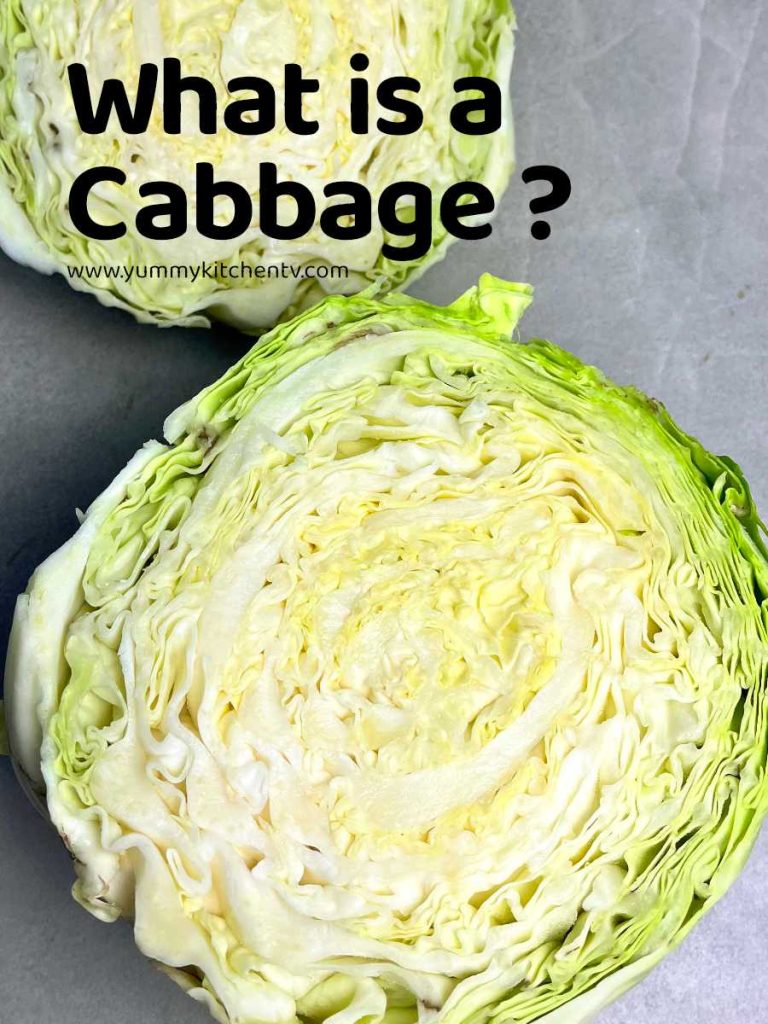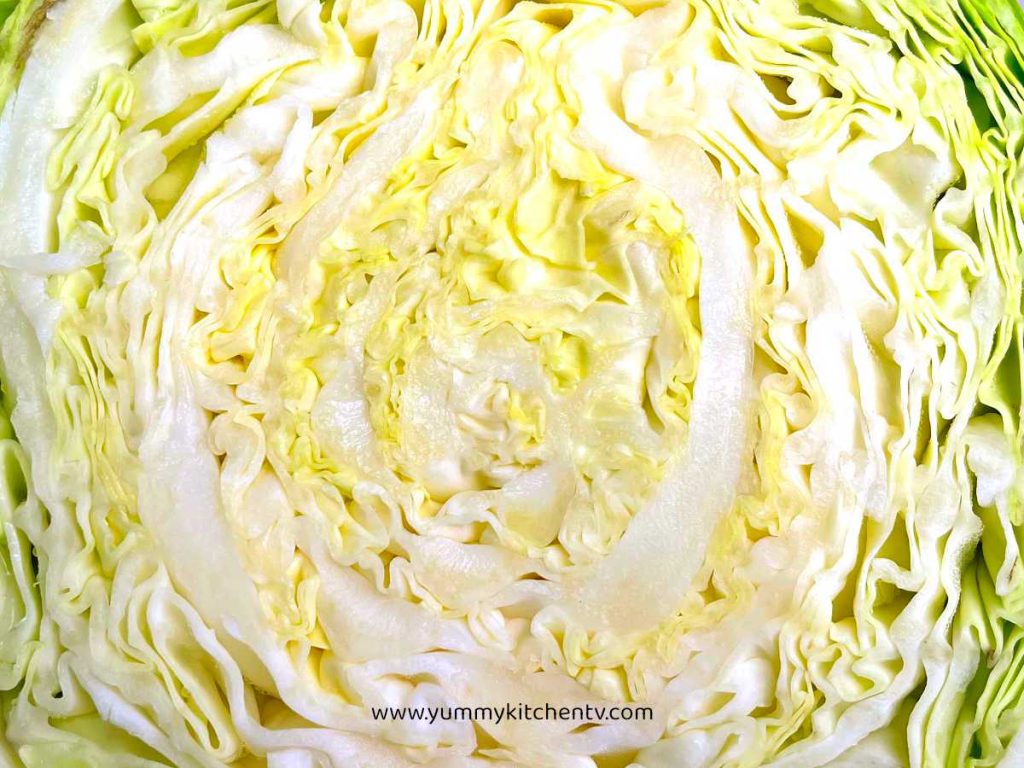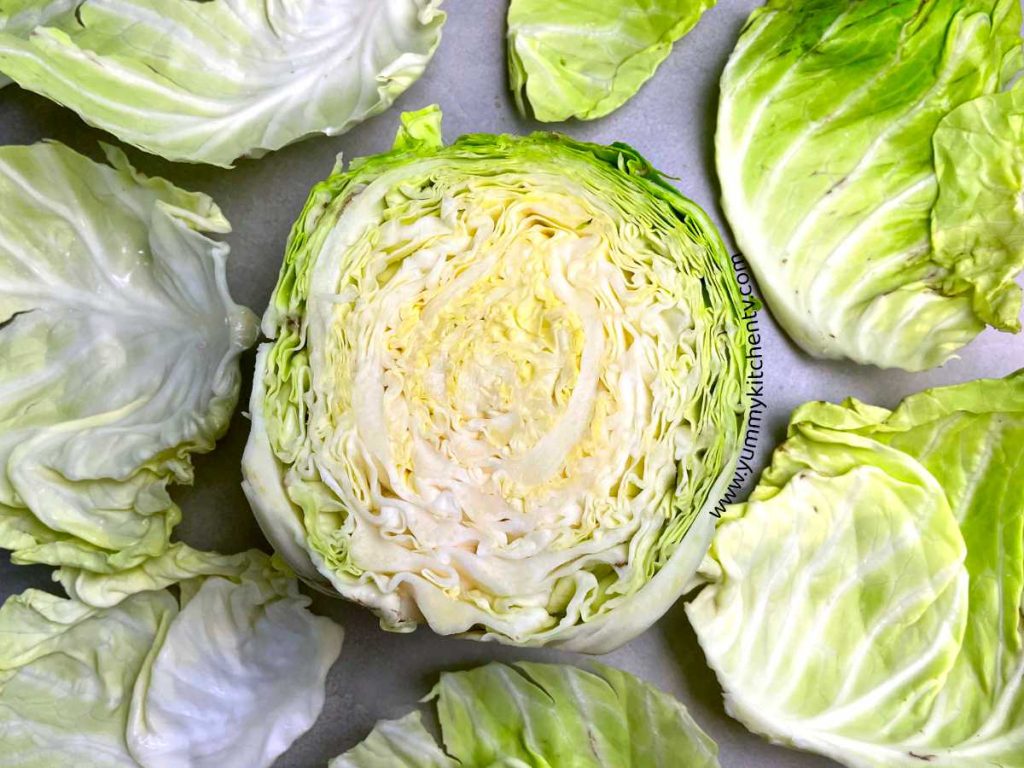Cabbage is a fibrous deliciously versatile leafy vegetable that is rich in vitamins and minerals that very much helps with gut health. This vegetable belongs under the ‘Brassica Oleracea’ species that makes them a relative to kale, brussel sprouts, broccoli, and the cauliflower. Grows the whole year round and goes along with many savory dishes from salads to appetizers, main dishes, sides, soups, stews, and stir-fry. This biennial plant can fill you up without too many adding up calories. There are a lot more cabbage benefits and delicious recipes that this modest ingredient has! Read more to find out.
A short introduction
The cabbage family is under the ‘Cruciferae’ or ‘Brassicaceae’ family with the cabbage scientific name “Brassica Oleracea var. Capitata”. A plant that are close relatives to cauliflower, kale, broccoli, and brussel sprouts. This herbaceous plant has leafy heads that came from or developed from the wild cabbage of a thousand years ago to the varieties we now know and or grow. The newer varieties are more pest resistant and depending on the land you live in will have a specific variety that can suit the climate and soil.
The earliest cabbage was a Mediterranean native, but was domesticated sometime before the Roman and Green eras as evidenced by the use of cabbages in 4,000 B.C.E at the Shensi province of China. The ancestral version of this vegetable continued to be cultivated to the point it even progressed to be made into kale or the ‘headless cabbage’ due to selective development. It started with 2 groups/varieties; the “Early” variety which matures in 50 days, that have smaller heads, and are intended to be consumed right away or at an earlier date. While the “Late” variety that matures in around 80 days and has a bigger head and can last longer. Both are commercially grown in humid, cooler climate areas with loam or sandy loam soils. The signs of them starting to sprout is when you see seedling grow to around 3 to 5 inches tall, then it begins to group leaves spread outwards slowing turning into the “cabbage flower” which similar to rose petals turn into a thin version of the leafy vegetable we typically see plus extra leaves still growing outwards, slowly they’ll turn into the thick circular bulb shaped vegetable we are familiar with.
With many popular recipes like the common but hearty cabbage soup recipes, the Western cabbage casserole or coleslaw, the filling, stuffed cabbage from Japan, German Kraustrudel, the healthy sauerkraut, added into beef stews, soups, salads, with more recipe examples below.
Cabbage vs Lettuce
While there are obvious differences visually between the two, there are varieties of lettuce like Iceberg Lettuce that look similar to the latter. Here are a list of its different tastes and textures.
- Both are low in calories but the cabbage has the most nutrients with the lettuce just having a bit more Vitamin A.
- Lettuce has a more watery bland taste which makes it best for dishes that use them as a salad filler or as a garnish. While the cabbage is eaten raw or cooked and can hold up its structure well, plus it has a slight peppery taste.
- Cabbage is also crunchier in texture than a Lettuce. Especially mixed in with dressing, Lettuce does not hold up its texture and can turn soggy faster.
Cabbage Health Benefits and Side Effects (Repolyo Benefits)
Cabbage calories (repolyo calories) are around 25 calories for 100 grams of serving. While sometimes this humble leafy crop is often overlooked or is added into a recipe as an afterthought. These are actually a delicious and healthy addition that can help the dish not only as a filler but as so much more. A nutrient dense leafy vegetable that is high in minerals and Vitamin C and K that helps which supports the body with:
- It improves the digestive system. A fiber rich ingredient that helps the gut which not only promotes a regular bowel movement but also helps improve the immune system.
- Keeps inflammation at bay. While inflammation is the way the body tells you that something is wrong (a response to food that can harm the body or wounds), one would prefer to calm the swelling which this vegetable filled with antioxidants can help with.
- Packed with Ascorbic acid, aka Vitamin C that helps the body produce more collagen to make the skin tight, elastic and bright.
- Reduce the risk of some cancers. A study found that people who intake more Vitamin C whether using any fruit or vegetable can reduce the risk of lung cancer.
- This leafy vegetable in its Red Cabbage variety has ‘anthocyanins’ that can reduce the risk of heart problems as these red/purple or green also lowers the cholesterol and blood pressure.
Kahalagahan ng Repolyo
A profitable crop in the Philippines, the cabbage or ‘Repolyo’ in Tagalog is a delicious versatile and well-loved vegetable added in many sautéed Filipino dishes. Whether added in soups, stews, for that added crunch, flavor, or fiber. These are grown all year round and is always in high demand, there are actually certain varieties grown in the Philippines. Benguet being the biggest producer, along with Negros (planted around the foot of Mt. Kanlaon), and is indigenous in cooler places of Luzon. The variety chosen is also important to avoid problems like pests and diseases to grow a healthy cabbage plant. One certain variety you’re sure to find is the Drumhead or Flat Dutch. These varieties have a high yield, is resistant to common diseases and many pests, and visually has a large round head. Some areas do grow other varieties like the red colored version known for its antioxidants, pechay, and Chinese Cabbage (also known as ‘Napa’) that also suits the Philippine’s climate and soil.
Cabbage Recipes
How to cook cabbage? It could be as simple as “ginisang repolyo with soy sauce” or cabbage stir fry seasoned with soy sauce, or the ever popular combo “ginisang repolyo with oyster sauce” which is similar but sautéed with oyster sauce, giving it that rich buttery feel. This vegetable is easy to add into many dishes, being tasty and easy to manipulate textually and physically. This ingredient makes interesting and Yummy dishes like:
- Stir-fry favorites:
- Stir-fry Cabbage with kikiam (a bean curd wrapped Chinese pork sausage)
- Ginisang repolyo with egg
- Ginisang repolyo with giniling na baboy (pork) or a Pork Belly version here
- Cabbage Pizza
- Chop Suey (which is a mix of vegetables, ginisang repolyo with shrimp or chicken with carrots, broccoli, mushrooms, green peas, and more)
- Tortang repolyo recipe also known as ‘Cabbage Omelette’
- Tuna with Cabbage and Sayote
- A fermented cabbage recipe, also known as ‘sauerkraut’
- Cabbage and pork soup
- Stuffed cabbage recipes:
- A simple salad or rather repolyo salad recipe “Spicy Kani Salad with Mango” replacing the lettuce with the crispier vegetable.







